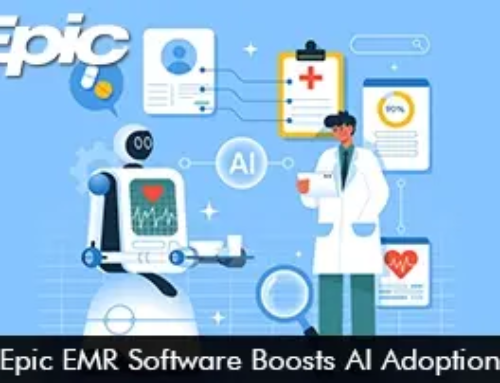As technology continues to advance, new trends in EMR software are emerging, promising to further enhance the efficiency and effectiveness of healthcare delivery. In this blog post, we’ll explore some of the most exciting emerging trends in electronic health records (EHR) software.
Cloud-Based EMR Software
One of the most significant trends in EMR software is the shift toward cloud-based solutions. Cloud-based EMR systems offer several advantages, including enhanced accessibility, scalability, and data security. Healthcare providers have access to patient records and clinical data from any location with an internet connection. This makes remote care and collaboration with different healthcare providers easier. Furthermore, cloud-based systems can scale to accommodate growing healthcare practices. This feature eliminates the need for extensive on-site infrastructure. Cloud-based EMR software makes practices more flexible and cost-effective.
Artificial Intelligence (AI) and Machine Learning
Artificial intelligence (AI) is able to analyze vast amounts of patient data, identify patterns, and assist healthcare providers in making informed decisions. EMR software integrates AI-driven features such as:
- predictive analytics
- early disease detection
- natural language processing
- data extraction from unstructured clinical notes
- clinical decision support systems
- evidence-based treatment recommendations
AI and machine learning play a pivotal role in improving diagnostic accuracy and patient outcomes.
Telemedicine Integration in EMR Software
The COVID-19 pandemic accelerated the adoption of telemedicine, and it has become an integral part of healthcare delivery. EMR software is increasingly incorporating telemedicine capabilities, allowing healthcare providers to conduct remote consultations, monitor patients’ vital signs, and share real-time data with patients. Telemedicine integration enhances access to care, particularly for patients in rural or underserved areas, and offers a convenient option for follow-up visits and routine check-ups.
Interoperability and Health Information Exchange
Interoperability remains a top priority in healthcare, and EMR software is making significant strides in this area. Efforts are being made to ensure that different EMR systems can seamlessly exchange patient data, reducing data silos and improving care coordination. Health information exchange (HIE) networks are also becoming more prevalent, enabling healthcare providers to securely share patient information across different organizations, ensuring that relevant data is readily available when needed.
Improved EMR Software Patient Engagement Tools
Engaging patients in their own healthcare is crucial for improving outcomes, and EMR software is facilitating this through patient engagement tools. EMR systems now include patient portals, secure messaging, and educational resources to empower patients to actively participate in their care. Patients can access their health records, schedule appointments, receive appointment reminders, and communicate with their healthcare providers through these portals, fostering a more collaborative approach to healthcare.
Wearable Technology Integration
Wearable devices, such as fitness trackers and smartwatches, are increasingly popular among consumers. EMR software is integrated with these devices to capture and monitor patient-generated health data. Healthcare providers can access real-time information about a patient’s activity level, heart rate, sleep patterns, and more. This data can be used to track progress, adjust treatment plans, and provide more personalized care. Wearable technology integration has the potential to improve chronic disease management and preventive care.
Voice Recognition and Virtual Scribes
Documentation is a significant part of a healthcare provider’s workload, and voice recognition technology is easing the burden. EMR software incorporates voice recognition capabilities that allow healthcare providers to dictate clinical notes and patient information directly into the system. This not only saves time but also reduces the risk of errors associated with manual data entry. Additionally, virtual scribe services are emerging, where trained professionals listen to patient encounters and create comprehensive clinical notes, further reducing the administrative burden on healthcare providers.
EMR Software Blockchain for Data Security
Data security and privacy are paramount in healthcare, and blockchain technology is gaining attention for its potential to enhance data security in EMR systems. Blockchain provides a decentralized and tamper-proof ledger for healthcare records, ensuring that patient data remains secure and immutable. Patients can have greater control over their data, granting access to providers as needed. Blockchain’s transparency and security features have the potential to reduce data breaches and increase patient trust in EMR systems.
Population Health Management
EMR software is evolving to support population health management initiatives. These systems can analyze patient data to identify at-risk populations, track health trends, and assess the effectiveness of preventive care programs. Population health management tools within EMR software help healthcare organizations proactively address the health needs of their communities and allocate resources more efficiently.
Predictive Analytics for Resource Allocation
Predictive analytics is becoming an essential tool for healthcare administrators using EMR software. By analyzing historical patient data, these systems can predict future patient volumes, resource requirements, and potential bottlenecks in care delivery. This allows healthcare organizations to optimize resource allocation, improve patient flow, and ensure that patients receive timely care.








